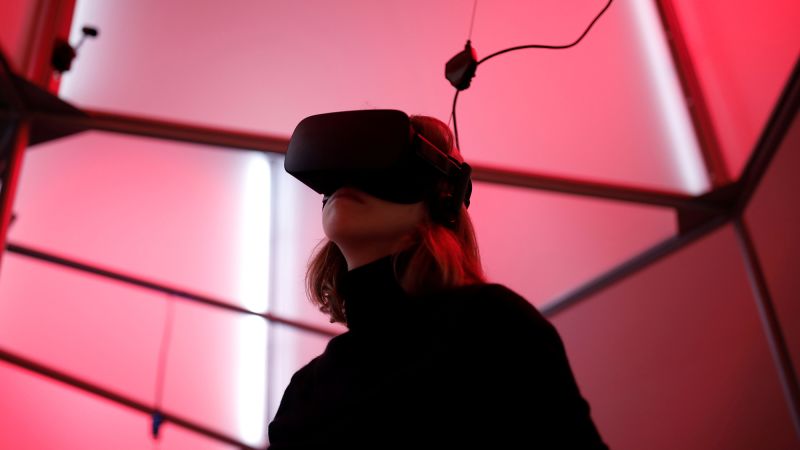Virtual reality (VR) has been touted as the next frontier of entertainment since around 2013, leading many to believe its mainstream breakthrough was imminent following the launch of the Oculus Rift. However, as we approach 2025, the industry hasn’t fulfilled that promise to the extent many hoped. Despite this, both technology and entertainment titans are optimistic that the breakthrough moment might be on the horizon.
In recent developments, compelling evidence showcases this renewed enthusiasm. Notably, reports indicate that Meta, the parent company of Facebook, is engaging in discussions with major entertainment companies, including Disney and A24, to create immersive content specifically designed for its Quest VR headsets. Apple has also made headlines by launching an update to the Vision Pro, allowing users to share experiences across different headsets, thereby enhancing the potential for social viewing of films in a three-dimensional space. The technology company has already debuted a Metallica concert in an immersive format, signaling its intent to integrate viral performances with VR technology, while also planning future upgrades for its headset to bolster performance.
This indicates that leading tech and media companies remain hopeful that consumers will invest significant amounts in VR experiences, from concerts to sports events, beyond the conventional viewing screens. Nevertheless, the industry faces a significant challenge commonly referred to as the “chicken-and-egg” paradox. To attract high-quality entertainment content, VR headsets require mass adoption, yet achieving that scale necessitates the availability of premium experiences to draw in users.
Over the past decade, there have been advancements in headset technology, producing devices that are lighter and more powerful than their predecessors. Industry insiders, including Sarah Malkin from Meta’s Reality Labs, suggest that while the ecosystem is evolving, the necessary cycle is beginning to break. Malkin asserts that a pivotal moment will arrive when users regularly engage in mixed-reality experiences that become an integral part of their lives, citing that this trend is already in progress.
The most recent statistics indicate a modest but promising growth in the market for augmented and virtual reality headsets. Global shipments reportedly increased to 7.5 million in 2024, while U.S. sales surged by nearly 30.8% to 3.4 million. Despite a forecasted dip in shipments due to delayed product launches, experts anticipate a substantial rebound by 2026, projecting a striking surge of 98.5% in global shipments to reach 11.3 million.
However, the financial landscape has not always aligned with these technological advancements. Meta’s venture into the Metaverse has resulted in a staggering $46 billion loss over three years, with Reality Labs reporting an operating loss of $4.2 billion in early 2024 and revenues down from previous quarters. Despite these setbacks, major companies continue to experiment with immersive technology. For instance, Meta’s $3.5 billion investment in eyewear manufacturer EssilorLuxottica demonstrates an ambition to advance its augmented reality spectacles.
The journey toward widespread adoption is far from guaranteed. As industry experts note, although there is recognition of VR’s potential, many studios still struggle to develop immersive storytelling that connects with audiences. It is crucial to understand that films and shows made for traditional platforms such as Disney+ or Netflix cannot merely be translated to VR without an appropriate redesign for the medium—a sentiment echoed by industry consultant Jenna Seiden.
To foster continued growth, exclusive content will be vital, just as platforms like HBO Max and Apple TV+ have succeeded by providing exclusive offerings. Furthermore, live virtual sports broadcasts may serve as a gateway for audiences to embrace extended reality, utilizing adaptable broadcasting methods such as 180-degree cameras.
In the face of shifting media landscapes punctuated by the rise of streaming services and changes in consumer behavior, VR and MR present new opportunities for creative distribution. However, increasing investment in XR remains imperative, as funding for AI and self-driving technologies has overshadowed that of VR in recent years. Experts, including Nepveu, are beginning to see a shift back toward XR as understanding of AI’s limitations grows.
Despite varied opinions on when VR might realize its breakout moment, with estimates ranging from one to ten years, there is broad agreement that immersive content will soon redefine how viewers engage with entertainment. As technology matures, the consumption of content may evolve, drawing parallels to how audiences perceive historical media, such as black-and-white films. With innovative developments and strategic investments in creating a new dimension of content, the future of VR in entertainment remains decidedly bright yet challenging.










